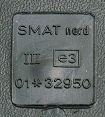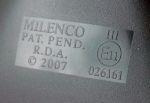How to Use Towing Mirrors Properly
Many members have contacted the Technical Information Department about towing mirrors. We have prepared the following regarding your questions about towing mirrors.
First and foremost the law states you must have adequate towing mirrors to provide a view to the rear and along both sides of your trailer/caravan. If your caravan obscures the rear view from your external door mirrors, or your caravan is wider than your car, you will need additional external towing mirrors. In the vast majority of combinations you will need towing mirrors. The field of view required is at twenty metres from the drivers position you must be able to see four metres out from both sides of the caravan. In practise this means you should see a person standing at the rear corners of your caravan and be able to see along the caravans length.
Make sure the mirrors are adjusted correctly and extension mirrors, where required, are removed when not towing.
For nearly 30 years, towing mirrors have been covered by a range of legislation. Layers of European directives overlaid by the UK’s own Construction and Use (C and U) Regulations and mirrors that meet these requirements are often marked with a lower or upper case E.
The Department for Transport (DfT) now states that towing mirrors used on any car registered on or after 26 January 2010 must carry an E marking (either lower or upper case) – but cars registered before this will not be legally obliged to use E-marked mirrors.
The DfT recommendation before the 2010 deadline is that it is best to use E-marked mirrors. The Club and all responsible caravanners will echo this as it ensures both safety and legal compliance. Even if your mirrors are not E marked they still need to meet the standards. Ask to see a certificate of compliance from your supplier or manufacturer to show they meet the current requirements stated in C and U Regulations – European Directives 71/127/EEC or 2003/97/EC or United Nations (UNECE) Regulation 46.01 or 46.02.

Figure 1
What do the E markings mean? If your mirrors meet the EEC/EC standard, they will be marked with a lower case e within a rectangle (see Figure 1) and the adjacent type approval number starts with 01* or 02*. If the number starts with 03* the mirrors also comply with the latest legislation, so you will be able to use them on a car registered after 26 January 2010.
 Figure 2
Figure 2
An upper case E within a circle shows a mirror complies with UNECE Regulation 46. If its approval number starts with 02 (see Figure 2) you know it also meets the latest 46.02 standard and will be acceptable for new cars in 2010.
Immediately after the e or E is a suffix showing where the mirror was tested for conformity. An 11 means it was tested in the UK, but other numbers are perfectly acceptable. Also, if your mirrors meet with the latest standards, they are permitted to extend out by 250mm. Mirrors built to earlier standards may only extend out by 200mm.
One vital part included in all the standards covers safety performance under impact. The importance of this was illustrated when an impact test was carried out on 20 non-E marked mirrors, witnessed by Caravan Magazine Journalist Mike Cazalet. On impact, all the mirrors sent shards of glass flying, with one mirror sending pieces six feet. “It was as if the mirror had exploded,” said Mike. Clearly if this happens when you have your side window open, the result could be very nasty indeed.
